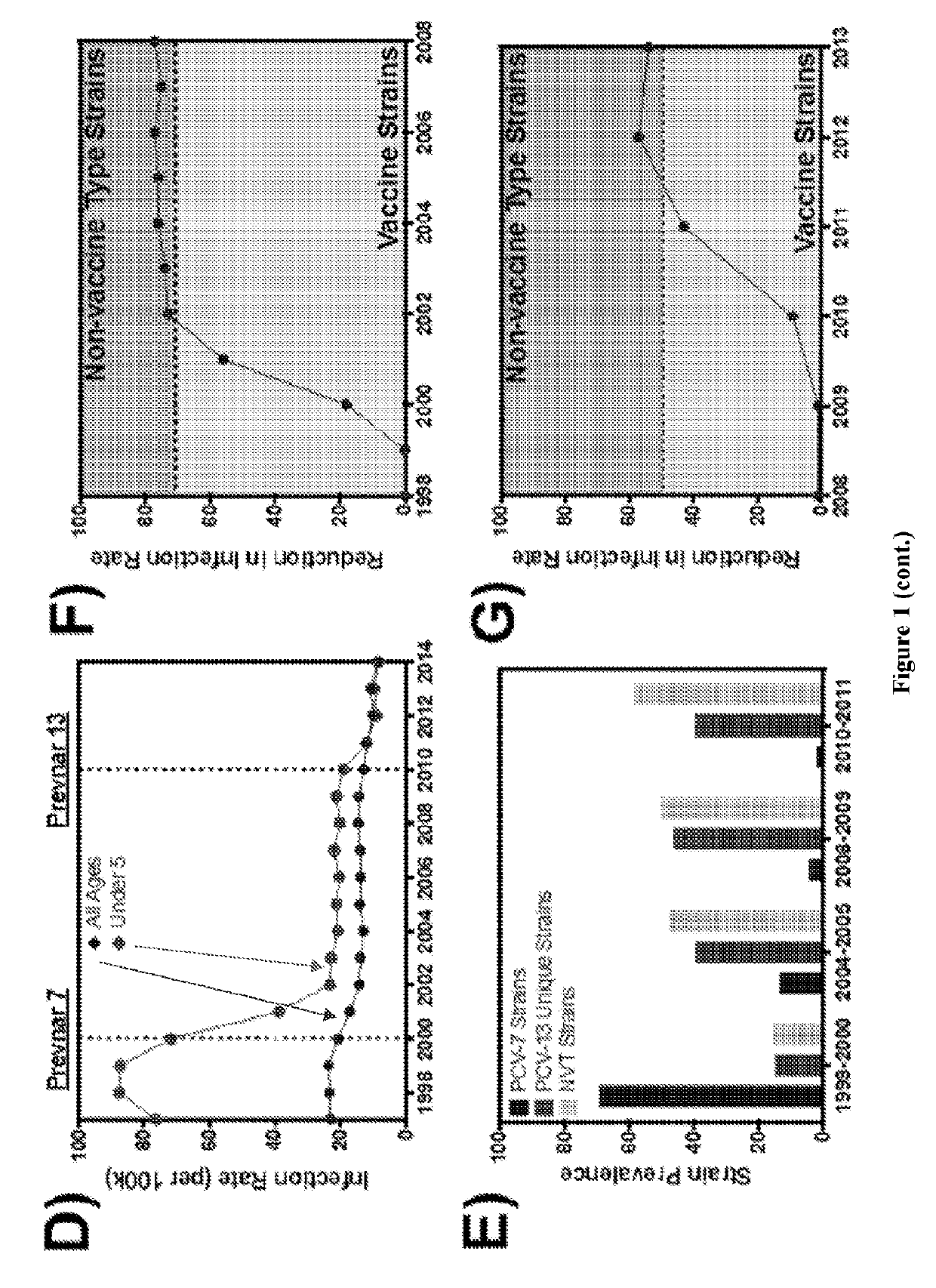Novel pneumococcal vaccine formulations
a technology of pneumococcal vaccine and formulation, which is applied in the direction of antibacterial agents, drug compositions, antibacterial medical ingredients, etc., can solve the problems of limited antibiotic treatment options, limited complete bacterial clearance, and difficult effective treatment of pneumococcal disease, so as to enhance (including complete) protection against the development and facilitate the adaptation
- Summary
- Abstract
- Description
- Claims
- Application Information
AI Technical Summary
Benefits of technology
Problems solved by technology
Method used
Image
Examples
example 1
[0074]The current work presents a strategy capable of providing directed protection against virulent, biofilm-released S. pneumoniae. Thus, the present strategy is based upon selectively targeting those pneumococci that are triggered for virulent biofilm escape in response to changes in the nasopharyngeal environment (FIG. 1C).
[0075]Through the combination of an in vitro biofilm model (FIG. 2A), which was treated with or without factors associated with virus-induced inflammation of the nasopharynx, and transcriptional analysis of the bacterial populations comprising this model, antigens were identified that were specifically upregulated in biofilm-released pneumococci which demonstrated increased virulence. S. pneumoniae is a human pathogen that, with the exception of a few strains, cannot cause invasive disease in mice. The biofilm model was used to condition a clinical isolate of S. pneumoniae (EF3030, serotype 19F), that is cleared from the bloodstream of mice when grown in broth...
example 2
[0095]In this example, new antigens associated with pneumococcal disease virulence were utilized as a basis for testing the delivery and adjuvant capabilities of a hybrid biological-biomaterial vector. The hybrid design provides 1) dual passive and active targeting of antigen presenting cells (APCs), 2) natural and multi-component adjuvant properties, 3) dual intracellular delivery mechanisms, and 4) a simple formulation mechanism. In addition, the hybrid device enables device-specific, or in situ, antigen production via the biological component of the vector. This capability eliminates the need for dedicated antigen production and purification prior to vaccination efforts while leveraging the features of the overall delivery device. Here, we present the potent utilization of the vector towards pneumococcal disease highlighted by protective capabilities when tested against a range of clinically-relevant Streptococcus pneumoniae strains. More broadly, the results here point to simila...
example 3
[0134]This example provides additional data describing PncO and GlpO utilized in an expanded sepsis model. Results are shown in FIGS. 23-27. In this example, adjuvant components were added to the GlpO and PncO protein antigens and testing was carried out as described in the above examples. Across the adjuvants tested with GlpO and PncO, there is generally a similar trend of vaccination effectiveness (measured as protection against disease challenge).
PUM
| Property | Measurement | Unit |
|---|---|---|
| Fraction | aaaaa | aaaaa |
| Chemical shift | aaaaa | aaaaa |
| Chemical shift | aaaaa | aaaaa |
Abstract
Description
Claims
Application Information
 Login to View More
Login to View More - R&D
- Intellectual Property
- Life Sciences
- Materials
- Tech Scout
- Unparalleled Data Quality
- Higher Quality Content
- 60% Fewer Hallucinations
Browse by: Latest US Patents, China's latest patents, Technical Efficacy Thesaurus, Application Domain, Technology Topic, Popular Technical Reports.
© 2025 PatSnap. All rights reserved.Legal|Privacy policy|Modern Slavery Act Transparency Statement|Sitemap|About US| Contact US: help@patsnap.com



